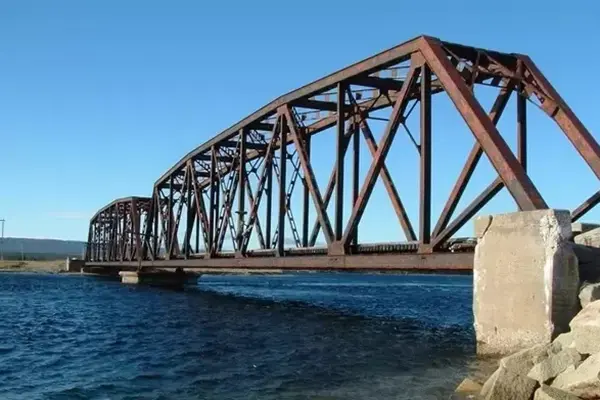In the field of structural engineering, trusses and plate girders are fundamental components used to support loads and span large distances. Despite serving similar purposes, trusses and plate girders differ significantly in their design, construction, and application. This article explores the distinctions between trusses and plate girders, highlighting their unique characteristics, advantages, and typical uses in various construction projects.
Understanding Trusses
A truss is a framework composed of triangular units connected at nodes. The basic principle behind a truss is that it efficiently distributes loads through its interconnected members, primarily experiencing axial forces – either tension or compression. Trusses can be made from various materials, including wood, steel, and aluminum, and they come in many shapes and sizes, such as Pratt, Warren, and Howe trusses.
Key Features of Trusses:
- Efficient Load Distribution: Trusses are designed to distribute loads evenly across all members. The triangular configuration ensures stability and strength, allowing trusses to span large distances with minimal material usage.
- Lightweight Construction: Due to their efficient design, trusses are relatively lightweight compared to other structural components. This makes them easier to transport and assemble, reducing construction time and costs.
- Versatility in Design: Trusses can be customized to fit various architectural and engineering requirements. They can be designed in different shapes and sizes, making them suitable for a wide range of applications, from small residential roofs to large industrial buildings.
- Open Structure: The open framework of a truss allows for the easy passage of mechanical systems, such as HVAC ducts and electrical wiring, without additional modifications.
Applications of Trusses:
Trusses are commonly used in building roofs, bridges, towers, and other structures where long spans and lightweight construction are essential. In residential construction, trusses are often used for roof support, providing a stable and durable framework. In bridge construction, trusses can span considerable distances, supporting heavy loads with minimal material.
Understanding Plate Girders
A plate girder is a large, horizontal beam constructed from steel plates welded or bolted together. Unlike trusses, which rely on a framework of interconnected members, plate girders consist of a solid web plate flanked by flange plates. The web plate resists shear forces, while the flange plates handle bending moments.
Key Features of Plate Girders:
- High Load-Bearing Capacity: Plate girders are designed to support substantial loads, making them ideal for heavy-duty applications. Their solid construction provides excellent strength and stability.
- Customizable Design: The dimensions of plate girders can be tailored to specific project requirements. Engineers can adjust the thickness of the web and flange plates to optimize the girder’s load-bearing capacity and performance.
- Flexibility in Construction: Plate girders can be fabricated in various shapes and sizes, accommodating different architectural and engineering needs. They can also be pre-fabricated off-site and transported to the construction site, streamlining the building process.
- Durability and Longevity: Steel plate girders are highly durable and resistant to environmental factors, such as corrosion and temperature changes. This ensures a long service life and reduced maintenance costs.
Applications of Plate Girders:
Plate girders are commonly used in bridge construction, industrial buildings, and other large-scale infrastructure projects where significant load-bearing capacity is required. In bridge construction, plate girders can span long distances and support heavy traffic loads. In industrial buildings, they provide robust support for overhead cranes and other heavy machinery.
Comparing Trusses and Plate Girders
Design and Construction: Trusses consist of a framework of interconnected members forming triangular units, while plate girders are solid beams made from steel plates. Trusses are typically lighter and more material-efficient, whereas plate girders are more robust and capable of bearing heavier loads.
Load Distribution: Trusses distribute loads evenly through axial forces in their members, providing stability and strength with minimal material. Plate girders, on the other hand, handle loads through shear forces in the web plate and bending moments in the flange plates, offering high load-bearing capacity.
Applications: Trusses are ideal for projects requiring long spans and lightweight construction, such as roofs and bridges. Plate girders are better suited for heavy-duty applications, such as bridge supports and industrial structures, where substantial load-bearing capacity is essential.
Conclusion
Trusses and plate girders are both crucial components in structural engineering, each with its own set of advantages and applications. Trusses offer efficient load distribution, lightweight construction, and versatility, making them suitable for a wide range of projects. Plate girders provide high load-bearing capacity, customizable design, and durability, ideal for heavy-duty applications. Understanding the differences between these two structural elements helps engineers and architects select the appropriate solution for their specific construction needs, ensuring the stability, efficiency, and longevity of their projects.
Post time: Jul-24-2024




